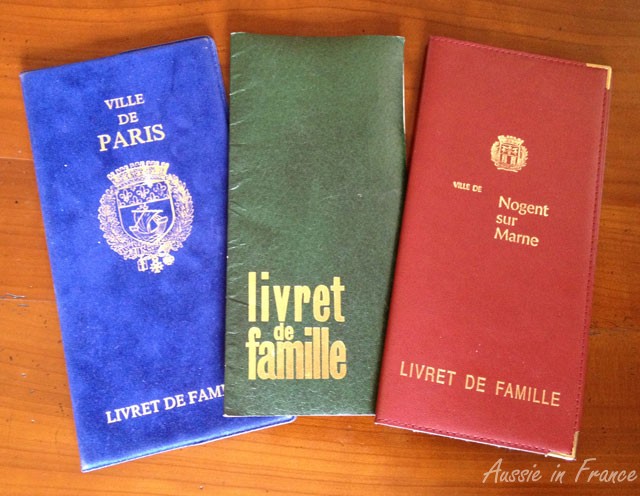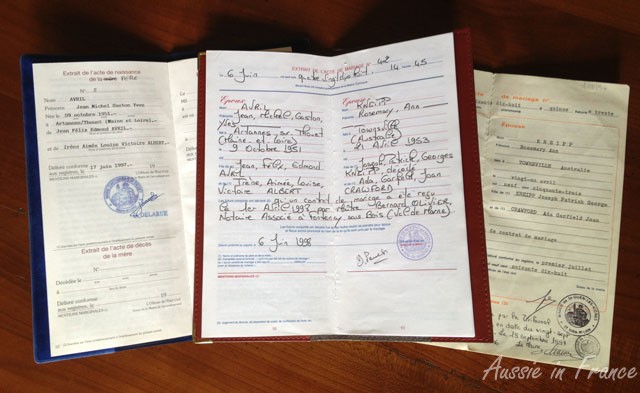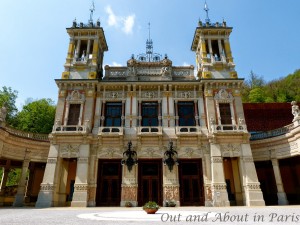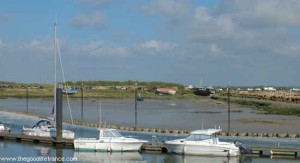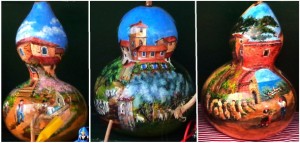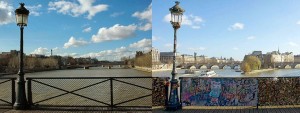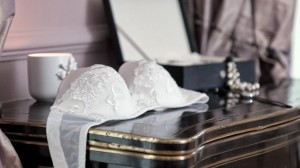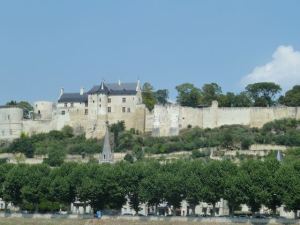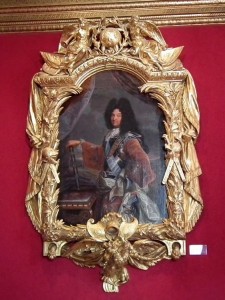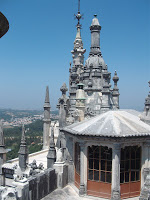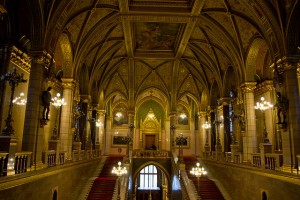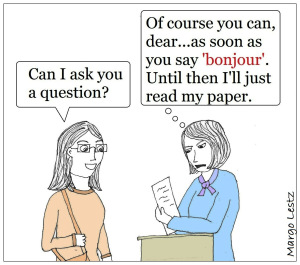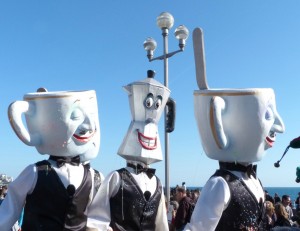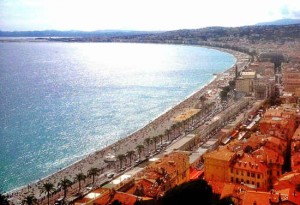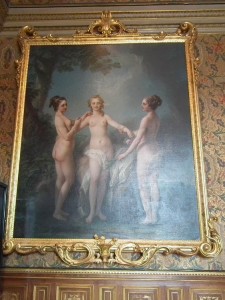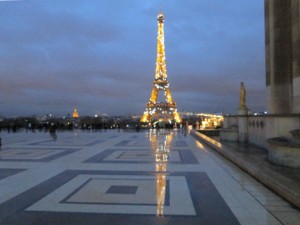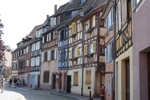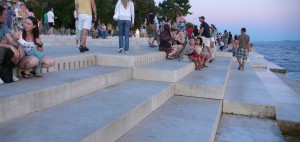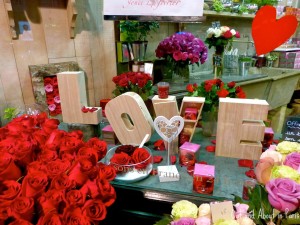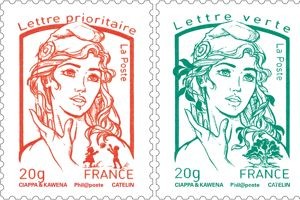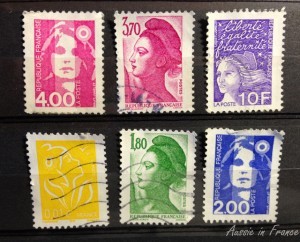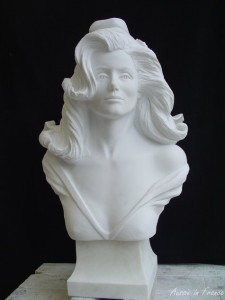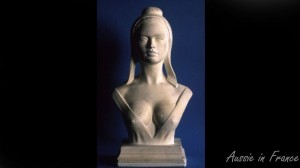I hate wasting time, probably because I never have enough. To me, the emergency department of a hospital is the epitome of wasted time, to be avoided at all costs. So far, I’ve managed to do so.
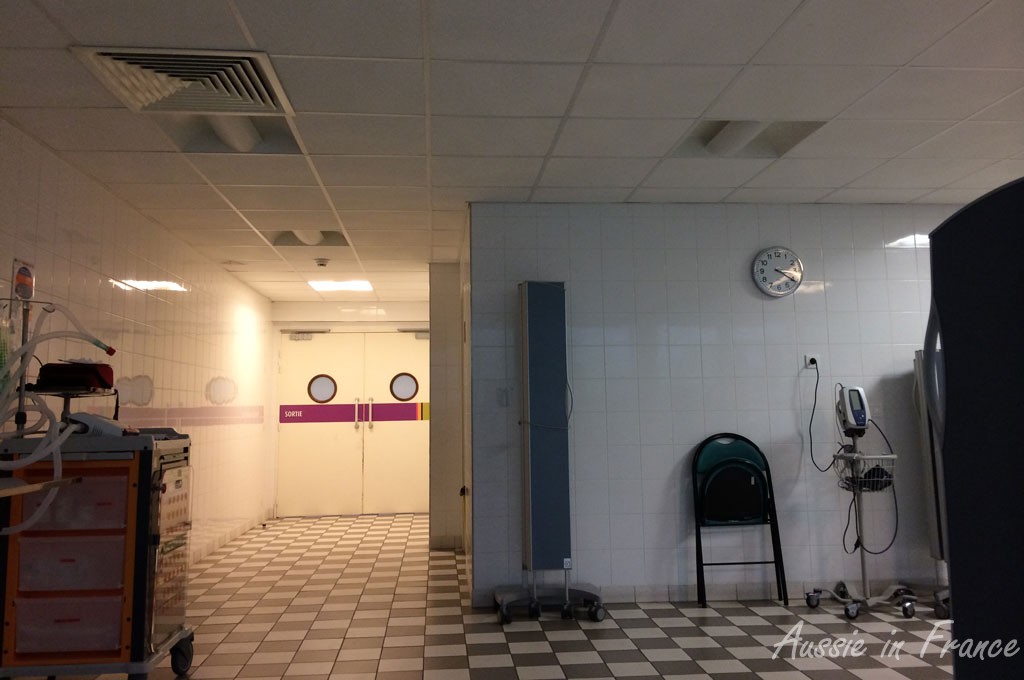
I wake up one morning in Blois with slight pain in my middle back. Hmm, that’s a new one. It disappears when I get up. Back in Paris next morning, the pain is more severe, like a bar across my back. I feel a tension in my chest as well. Once again, it goes away quite quickly. It continues for the next 3 days, appearing earlier and earlier in the night and forcing me up well before my usual wake-up time.
I call the doctor but learn she’s on holidays. Of course. It’s August and the great exodus has already taken place. I’m not keen on seeing a locum now that I’ve learnt that 6th year medical students can do the job. I want someone with more experience. I decide to wait and see.
Next day, when I wake up the back pain has disappeared but my chest feels as though it might explode. I call my doctor again and learn there is no locum so I phone SOS Médecins, the French emergency service. I explain my problem and am immediately put through to a doctor. He says he’ll send someone within the hour.
By the time the doctor arrives, the pain has almost disappeared. She examines me and says she doesn’t think it’s a heart problem but more likely to be digestive. However, to rule out the cardiac factor, she takes an electrocardiogram.
“Ah”, she says, “I have a problem. You have an unusual electric signal in your heart that means I can’t be sure of what the electrocardigram is telling me.” She calls the SOS Médecins service and asks if they have a cardiologist available. They don’t, of course. It’s August. “You’ll have to go to the urgences,” she says. “You really do need to check it’s not a heart problem.”
Without hesitation, she sends me to Saint-Antoine Hospital in the 12th arrondissement, which at least is on my metro line. I get ready, try to contact Jean Michel and discover he’s left his mobile phone at home. I leave a message on his work phone. Showing great foresight, I take my Kindle and charger.
The emergency department seems deserted. I hand over my prescription and my Carte Vitale (the French medicare card) and am told to sit down, that I shouldn’t have to wait too long.
Within minutes, I am called in. A friendly male nurse introduces himself and asks me to lie on a gurney (lit à roulettes) while he does an electrocardiogram. I’m feeling quite zen and relieved not to have already spent an hour in the waiting area.
He checks my previous electrocardiogram and says, “There’s something I don’t like. We’re taking you into the emergency ward. Stay put.”
I’m wheeled into a long room next door and parked in a bay next to a nursing station. Several people come and introduce themselves and perform their different tasks: electrocardiogram, drip, chest X-ray, auscultation, including a very timid 6th year student who takes so long to listen to my back with her stethoscope that I get cramps in my feet.
The nurse looking after the drip is having problems with the vein in my hand and it’s very painful. Also, my watch is in the way, so they take it off along with all my other jewellery which they put in a sealed bag with my cash and credit cards to be retrieved later from the front desk. None of this is very encouraging.
My phone rings during the chest X-ray so I can’t answer it. It turns out to be Jean Michel who has now gone off to a business lunch. What if they decide I need to be operated on immediately? I start feeling very sorry for myself.
Eventually, a very jolly doctor, who seems to be in charge of the ward, comes over to see me. She explains that there probably isn’t a heart problem but they need to check it out. She prods me more effectively than the student and I wince (well, it’s probably more like a repressed scream) when she digs into my ribs.
After a couple more prods, she says that she thinks I’ve strained my intercostal muscles. I try to think what could have caused it and can only imagine gardening. After falling off my bike in Germany and crashing into the bushes, I have been saving my knee so maybe I have been stooping over too much.
I ask how long this is going to take. She explains there is an enzyme test that is performed again after six hours which they may have to do. Six hours! But in the meantime, they are going to take me to the stage 2 emergency room, she tells me. I ask for something to relieve my headache and she gives me paracetamol, despite the fact that I tell her it has absolutely no effect on me. I need something with aspirine or codeine. Sigh.
There are about six or eight beds in the next room, all in a row and separated by folding screens. I’m in the one closest to the door and can see relatives coming to visit the patients. I try phoning Jean Michel again but it’s only 2.30 pm and he’s still at lunch. I’m starting to feel hungry myself but can’t have anything to eat.
About fifteen minutes later, he rings to commisserate but can’t come to the hospital because he is doing his technical roster this week and can’t leave the area in which we live. I’m still hoping I won’t have to have the 6-hour enzyme test.
By now, my Kindle is charging on the nursing station but the cord is long enough so I can still read it. I’ve already downloaded a new book. There is no pillow on the emergency bed so despite the pain from the vein in my hand, I manage to fold my blouse and three-quarter pants that had been stuffed uncaringly into a plastic bag and hung on the end of the bed, and place them inside the bag to form a makeshift pillow under the sheet. It’s not very comfortable but it’s better than nothing.
I dose and read, read and dose. I have a FaceBook conversation with a friend but the painful vein makes it difficult to type with my left hand and I’m afraid of dropping the phone with my right hand. She offers to come and see me but I am still hopeful of leaving shortly.
An old man further along the row is arguing with the nurses because he wants to go home (don’t we all?) but he fell and has a brain haemorrhage so they understandably don’t want to let him go. They finally say they’ll phone his son in Germany to see what he has to say. That has the required effect and he calms down.
I need to use the bathroom and don’t want a bedpan so they unsnap all the electrocardiogram leads and put my drip onto a portable stand. I’m dressed in one of those non-woven bedshirts so the nurse makes me a toga with a sheet and I shuffle down the room and into the corridor, wheeling my drip stand with the hand that has the painful vein.
I come back to bed and discover it’s been reorganised and my makeshift pillow removed so I start all over again. My headache is worse than ever so I ask for stronger medication. It’s too soon after the useless paracetamol, I’m told. I lie in my bed feeling very lonely and have a little weep before going back to my Kindle.
At about 6 pm, a nurse comes to check on me and I tell her I’ve had enough and am ready to go. I’ll sign myself out if necessary! She is very understanding and says that the worst is over. Only a bit more and they’ll do the second enzyme test. I ask for a timeframe. Eight o’clock at the latest and you’ll be out of here, she says.
TWO MORE HOURS. I insist on the headache medication again so someone eventually comes along with another drip. This time it works.
At 7 pm, the blood test is carried out and after 20 minutes, since the results are positive, they take out the drip and unsnap my leads. I can get dressed. I take a while to remove all the adhesive snaps from my body (I discover more in the shower that night) and put my wrinkled clothes back on.
The doctor comes along and says I’m clear (but really should have an ultrasound of my heart – you gotta be kidding!), gives me an envelope with my X-rays and cardiograms and a prescription for codeine … There is no doubt in her mind that the problem is due to intercostal strain.
I pick up my jewellery, ring Jean Michel to tell him on my way home, and walk outside. I’m FREE after almost 8 hours! I see a bakery next to the metro station and buy a croissant au beurre. The best I’ve ever tasted!




